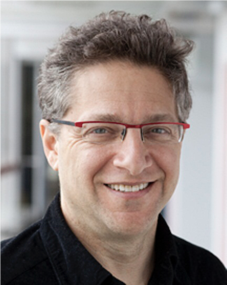
Secrecy and the Self
Wednesday, April 19, 5:30 PM
Marian Miner Cook Athenaeum
In 1997, scientific historian Peter Galison was named a John D. and Catherine T. MacArthur Foundation Fellow; in 1999, he was a winner of the Max Planck Prize given by the Max Planck Gesellschaft and Humboldt Stiftung.
Galison's main work explores the complex interaction between experimentation, instrumentation, and theory. His volume on experiment, How Experiments End (University of Chicago Press, 1987), and that on instruments, Image and Logic (University of Chicago Press, 1997), are to be followed by the final volume, "Building, Crashing, Thinking," that is still under construction. Einstein's Clocks, Poincaré's Maps (W.W. Norton, 2003) begins the study of theory by focusing on the ways in which the theory of relativity stood at the crossroads of technology, philosophy, and physics. Image & Logic won the Pfizer Award from the History of Science Society in October 1998.
In addition, Galison has launched several projects examining the powerful cross-currents between science and other fields. His book (with Lorraine Daston), Objectivity (Zone Books, 2007) asks how visual representation shaped the concept of scientific objectivity, and how atlases of scientific images continue, even today, to rework what counts as right depiction. Further work on the boundary between science and other fields includes his co-edited volumes on the relations between science, art and architecture, The Architecture of Science (MIT Press, 1999; ed. with Emily Thompson) and Picturing Science, Producing Art (Routledge, 1998; ed. with Caroline A. Jones), as well as Big Science: The Growth of Large-Scale Research (Stanford University Press, 1992; ed. with Bruce Hevly), The Disunity of Science: Boundaries, Contexts, and Power (Stanford University Press, 1996; ed. with David J. Stump), Atmospheric Flight in the Twentieth Century (Kluwer, 2000; ed. with Alex Roland), Scientific Authorship: Credit and Intellectual Property in Science (Routledge, 2003; ed. with Mario Biagioli), and Einstein for the 21st Century: His Legacy in Science, Art, and Modern Culture (Princeton University Press, 2008; ed. with Gerald Holton and Silvan S. Schweber).
